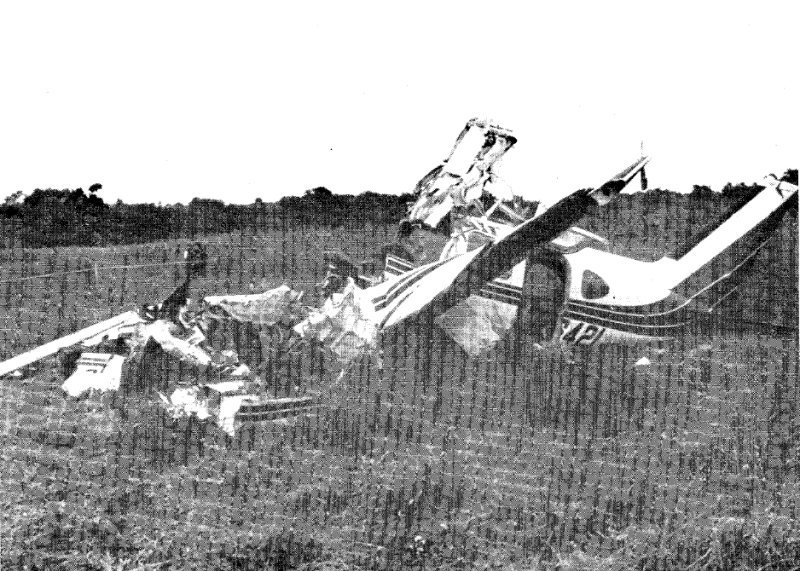
ASN Wikibase Occurrence # 13577
This information is added by users of ASN. Neither ASN nor the Flight Safety Foundation are responsible for the completeness or correctness of this information.
If you feel this information is incomplete or incorrect, you can submit corrected information.
| Date: | Monday 8 October 1979 |
| Time: | 10:08 |
| Type: |  Piper PA-31 Navajo |
| Owner/operator: | Comair Inc. |
| Registration: | N6642L |
| MSN: | 31-580 |
| Fatalities: | Fatalities: 8 / Occupants: 8 |
| Aircraft damage: | Destroyed |
| Category: | Accident |
| Location: | Cincinnati/Northern Kentucky Airport (CVG/KCVG), KY -
 United States of America United States of America
|
| Phase: | Initial climb |
| Nature: | Passenger - Scheduled |
| Departure airport: | Cincinnati/Northern Kentucky Airport, KY (CVG/KCVG) |
| Nashville International Airport, TN (BNA/KBNA) | |
| Investigating agency: | NTSB |
| Confidence Rating: |
On October 8, 1979, at 10:08:26, COMAIR, Inc., Flight 444, a Piper PA31-310, with a pilot and seven passengers on board, crashed on takeoff from runway 18 at the Greater Cincinnati Airport, Covington, Kentucky. The pilot and the seven passengers on board were killed, and the aircraft was destroyed.
After 1,500 to 2,000 ft of takeoff roll, the aircraft lifted off abruptly and climbed slowly to about 150 ft above the runway. Following liftoff, the pilot reported a loss of power from an engine, and the tower controller cleared the pilot to return and land. Seconds later, the aircraft rolled to the right to an inverted position and dove, nose first, to the ground.
The National Transportation Safety Board determines that the probable cause of the accident was the loss of control following a partial loss of power immediately after liftoff. The accident could have been avoided if either the pilot had rejected the takeoff or had raised the landing gear and flaps. His failure to take decisive action may have been due to preoccupation with correcting the malfunction, and a lack of familiarity with the aircraft and with its emergency procedures.
Contributing to the accident was the pilot's inexperience in multi-engine aircraft, a hurried departure, inadequate training, inexperienced company management, and ineffective FAA certification and surveillance of the operator.
Accident investigation:
|
Sources:
1. NTSB Identification: DCA80AA002 at https://www.ntsb.gov/_layouts/ntsb.aviation/brief.aspx?ev_id=34515&key=0&queryId=b46e5324-b19f-4a21-a66f-64e2f54f7cba&pgno=1&pgsize=200
2. FAA: http://registry.faa.gov/aircraftinquiry/NNum_Results.aspx?NNumbertxt=6642L
Images:

(c) NTSB
Revision history:
| Date/time | Contributor | Updates |
|---|---|---|
| 25-Feb-2008 12:00 | ASN archive | Added |
| 08-Apr-2008 11:11 | harro | Updated |
| 08-Apr-2008 11:16 | harro | Updated |
| 08-Apr-2008 11:22 | harro | Updated |
| 10-May-2015 21:30 | Dr. John Smith | Updated [Operator, Location, Departure airport, Destination airport, Source, Narrative] |
| 10-Feb-2020 09:03 | harro | Updated [Source, Accident report, ] |
| 29-Jul-2020 08:16 | Captain Adam | Updated [Location, Departure airport, Destination airport, Accident report, ] |
Corrections or additions? ... Edit this accident description
The Aviation Safety Network is an exclusive service provided by:


 ©2024 Flight Safety Foundation
©2024 Flight Safety Foundation